
The landscape of business go-to-market strategies is undergoing a significant transformation.
Traditionally, businesses relied on tactics like cold emailing, cold calling, and paid advertisements to generate revenue. However, with the rapid expansion of technology, there has been an increasing level of market saturation, leading to the necessity of adopting new approaches.
A key method that businesses have embraced to drive growth more effectively is through partnerships. These partnerships become even more impactful when multiple entities collaborate to form a partner ecosystem.
Here, we will explore the concept of a partner ecosystem, delve into the process of building such an ecosystem, and outline the essential framework required to ensure the prosperity of your partnership ecosystem.
Whether you seek to gain an understanding of what an ecosystem entails and how to initiate its implementation or you currently possess a thriving partner ecosystem in need of organizational structure, this article is designed to provide valuable insights.
What is a Partner Ecosystem?
Before diving further into this topic, it's valuable to pause and first clarify what we mean when we refer to a partner ecosystem.
As we mentioned briefly above, a partner ecosystem is a series of interconnected partners that operate together for their mutual benefit.
Imagine you are just starting off your partner program and are only partnering with one partner, it may look something like this:

As you start to add more partners, you will realize that you are building a web where there are several overlaps, and all partners are part of one living, breathing network, (otherwise known as an ecosystem).

To build upon this point further it's worth detailing some partner ecosystems that have grown to incredible proportions.
Partner Ecosystem Example - Shopify
The first example of an effective partner ecosystem can be seen when looking at a company like Shopify.
With Shopify, you have an SaaS partner ecosystem that is made up of 700,000 app developers, designers and partners, of which these partners make $800m in revenue, whilst Shopify brings in over $5bn.
This partner ecosystem not only ensures the adoption and stickiness of Shopify as a product but also provides a way for their partners to grow and scale.
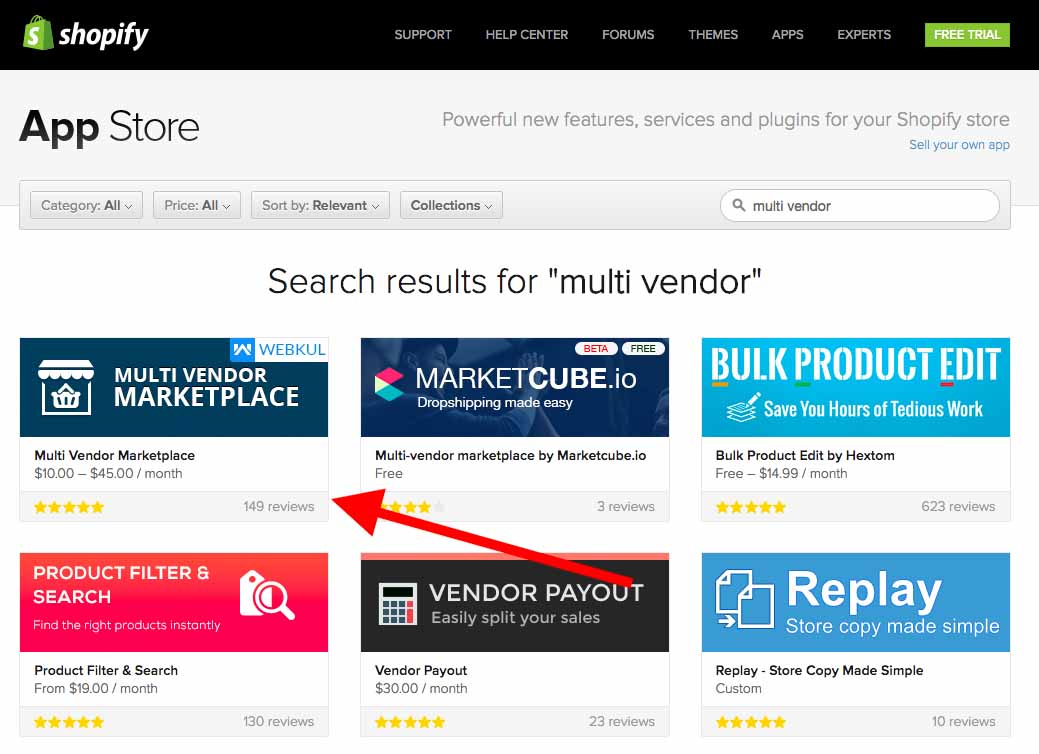
Partner Ecosystem Example - HubSpot
Another shining example of a SaaS partner ecosystem is another large ecosystem in HubSpot.
HubSpot has focused hard on making partnerships central to its overall growth strategy and as a result has grown to featuring over 2,000 partners with a mix of both technology and channel partners.
Not only have these companies created large ecosystems, but these ecosystems have also driven improved customer satisfaction as well as revenue for both the partners and the software companies.
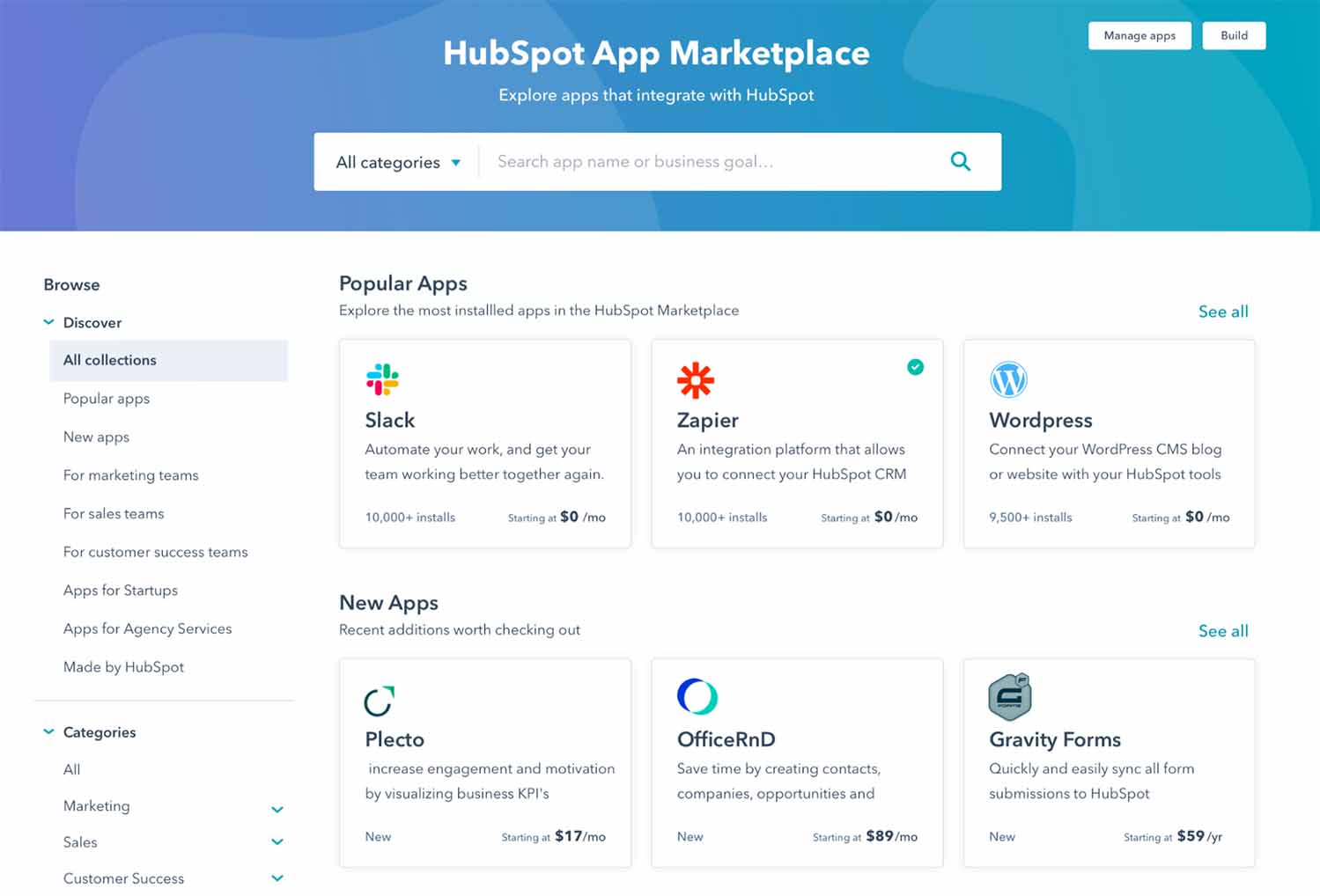
How Do You Build A Partner Ecosystem Framework For Your Business?
With the explanation of what a partner ecosystem is being unpacked above, the next question you most probably want answered is how do I build a partner ecosystem for my own business?
A partner ecosystem, especially a large and impactful ecosystem like those from HubSpot and Shopify have taken years to build, and so cannot be created over a short period of time.
But this is no reason to be discouraged from building your own.
With a clear guiding strategy supported by a purposefully crafted framework, even early efforts toward nurturing a partner ecosystem can be rewarding.
Define Your Ecosystem Strategy
Your first stepping stone in creating a framework for your partner ecosystem is to define what you are looking to accomplish by creating an ecosystem led strategy for your business.
It is not enough to say “I want to create an ecosystem.” There needs to be a business benefit behind the strategy in order to make it effective.
There are several compelling reasons to establish a partner ecosystem. One of them is the desire to increase the adoption rate among your existing customers.
This could involve developing a network of implementation or solutions partners to enhance your offerings.
Alternatively, you may seek to incorporate additional features and functionalities into your product, which necessitates building an ecosystem of integration partners.
You need to have a North Star as you start to build out your partner ecosystem in order to get it moving in the right direction, and be able to quantify the overarching benefit that it is providing to your company.
Gather Whole Company Support
Once you decide upon the reason behind your ecosystem partner strategy, your next objective is to bring the whole company along with the strategy.
Without a concerted effort by all to bring the ecosystem together, it can lead to partnerships that never fully get off the ground and bring about ineffective, tepid results.
After all, other organizational teams may contribute directly or indirectly to the ecosystem framework itself.
When trying to get the whole company behind your ecosystem strategy you will need to show to every key stakeholder the power of ecosystems and as a byproduct what it's likely to do for their area of the business.
For example, when talking to your marketing leader, you might explain how creating an ecosystem leads to a whole range of partners with whom you can co-market, sharing the marketing costs and multiplying the overall reach of the launched campaigns.
By leading with the individual benefits to each key stakeholder you are far more likely to gather company wide support for building a partner ecosystem framework.
Learn more about how Dana Vickey, VP of Partnerships at Eightfold brings people together from all over the business to work together:
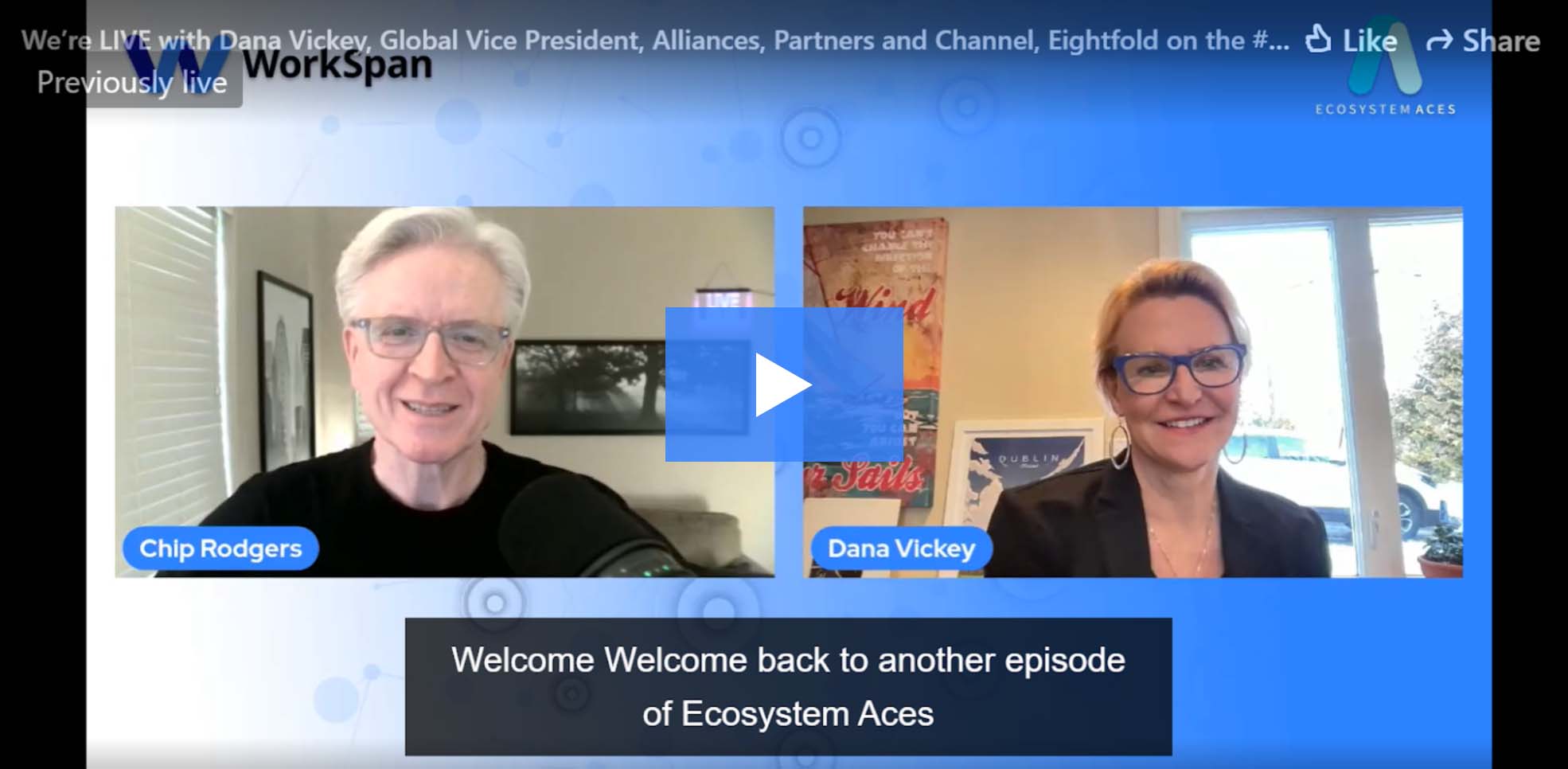
Recruit The Right Partners
Without partners, your ecosystem is nothing more than a concept. Therefore the next key part of your ecosystem framework is to sketch out an ideal partner profile.
This profile should contain the makeup of the partner that you feel is the best fit given the ecosystem strategy you are pursuing.
For example you could be targeting integration partners that have telephony functionality to expand a gap in your overall product.
You want to map out the top partners in the space in order to make sure that they fit your overall ecosystem plan.
In order to do this you can use websites like G2, and navigate to the section that is entitled “cloud phone solutions”, from here you can look for companies that you feel are a fit and reach out to.
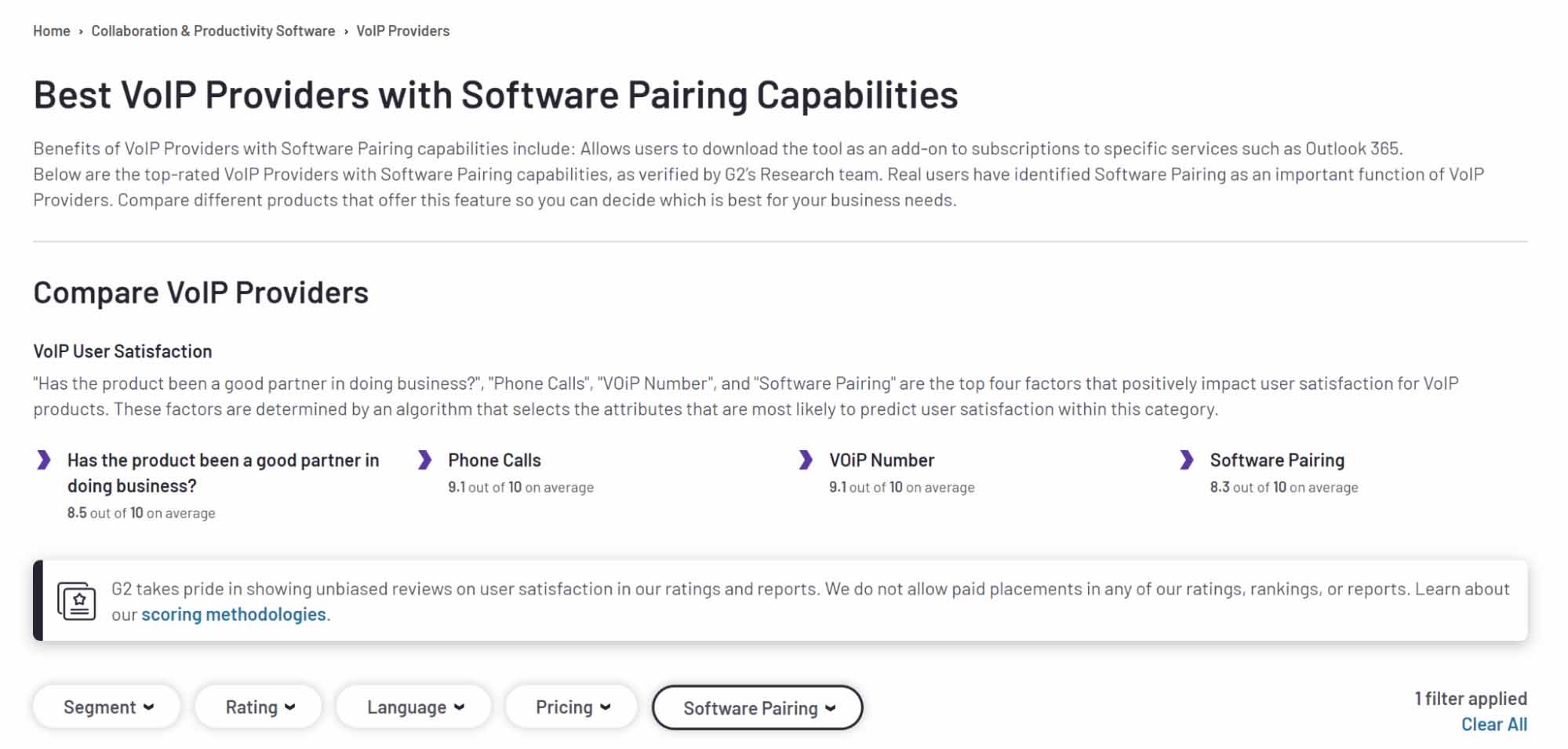
By crafting partner profiles for each part of your ecosystem strategy, you are more likely to find a partner that is a good fit and can move your program toward its underlying goals.
Provide A Great Partner Experience
With your partners signed, it's now time for them to activate and move in tandem to support your current customers and help you to attract new ones.
A core part of this is providing an optimal partner experience for your entire ecosystem.
As Jose Van Dijk, Vice President of Partner Performance at Cisco mentions, “Having the right tools and information needed is essential for all ecosystem partners to succeed.”
Without a support system around your partner ecosystem, many of your partners will grow frustrated and not reach their full potential.
This support framework includes people, in the form of partner managers, to help them along the way; resources, in the form of marketing and training resources; and finally, software to make the experience as seamless as possible.
(Read more about how to build an optimal partner experience in our blog post “Why The Right Partner Experience Is Vital For Your Ecosystem”).
Tools like WorkSpan help your partner ecosystem grow through their co-sell app.
With WorkSpans co-sell app, you are able to efficiently manage and scale your co-sell pipeline, revenue and wins with partners, creating a seamless experience and creating more joint wins for you and your ecosystem.
Provide Revenue Growth Opportunities
We touched on co-selling in the previous paragraph, but it needs to be touched on again here.
One of the main ways that you can get your ecosystem flywheel moving is by mutual wins.
When you look at the “famous” ecosystems detailed above, both HubSpot’s and Shopify’s partners make serious revenue off the back of their platforms.
This needs to be front and center of your ecosystem strategy.
Find ways to promote your partners and generate revenue for them, and in return they will do the same for you, and the flywheel will keep spinning.
One impactful way that you can increase your ecosystem partners revenue is by going to market together and co-selling.
Co-selling involves working with partners to create a joint solution and then jointly marketing it to your customer base.
It’s dependent upon sales, marketing and partnerships to be successful. The resulting multi-team collaboration not only increases revenue, but also builds closer relationships with your ecosystem partners.
With solutions like WorkSpan, the process becomes seamless due to the ability to automate, track and measure your co-sell efforts increasing the overall likelihood of success.
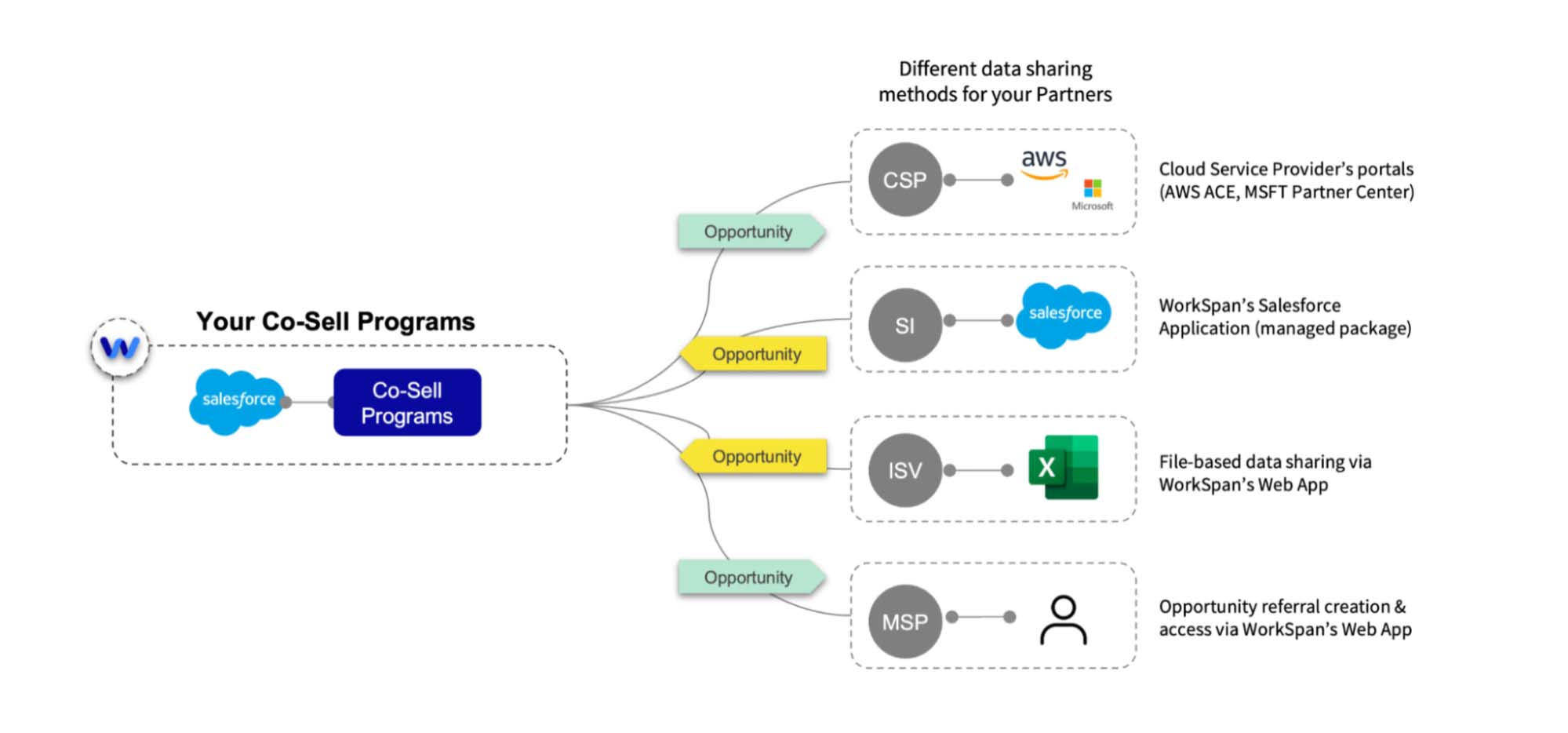
Measure And Evaluate
The penultimate building block of a good ecosystem framework is to continuously measure the overall effectiveness of your ecosystem.
As we mentioned earlier, there should be a North Star which anchors your ecosystem strategy.Therefore, the metrics you track should be linked to this goal.
For example if your overall goal was to increase customer adoption by creating a network of solution partners, you should be able to look at your overall net retention rate and see if your ecosystem strategy is paying dividends.
Conversely, if your metrics are not changing for the better, this might be the time to either reevaluate the partners that you are recruiting into your ecosystem, or assess your overall partner program and the experience your ecosystem partners are having.
To learn more about assessing partnership metrics and evolving your framework in response, read How to Measure Your Co-sell Partner Program?
Adapt And Evolve Your Strategies and Supporting Framework
In the ever-evolving world of SaaS, change is constant, and this applies to the composition of your ecosystem as well. It is essential to acknowledge that influencing factors are dynamic and may require adjustments over time.
Moreover, the overarching goal of your ecosystem might need occasional shifts to align with new business objectives. Initially, your ecosystem goal might have been centered around increasing net retention, and you may have successfully established a strong network of partners contributing to this metric.
However, as your ecosystem matures and achieves stability in net retention, it becomes necessary to reassess your strategic focus. This could involve redirecting efforts towards goals such as acquiring net new customers or enhancing integration functionality. In turn your partnership program’s supporting framework may need modifications, as well.
Building a robust ecosystem strategy is a gradual process that demands adaptability. It is crucial to be prepared for constant evolution, ensuring that your ecosystem remains aligned with your business needs and continues to deliver long-term impact.
Partner Ecosystems Are The Future
In conclusion, partner ecosystems are one of the most impactful, sustainable go to market strategies available to companies today.
When done well, as in the cases of Shopify and HubSpot mentioned above, they can not only create substantial revenue for your business but also create several additional benefits, including happier customers and more functionality inside of your core product.
Building a partner ecosystem is a large task, and one that takes a while to take form, but the network effect offered by doing it effectively is hard to replicate.
When considering building out a partner ecosystem be sure to also think about the tooling that you will need to successfully deliver a great partner experience.
One such tool that is critical to this is something that helps you co-sell effectively with your ecosystem partners, is WorkSpan.
The WorkSpan Co-Sell App revolutionizes the way in which you are able to co-sell with your partners providing a single platform to run activities such as planning co-sell motions, exchanging referrals and collaborating together to drive the greatest change of co-sell success.
If this is something you are missing in your partner ecosystem strategy, book a demo.
Or if you are looking for some more partnership content, read on below….
Heading
Heading 1
Heading 2
Heading 3
Heading 4
Heading 5
Heading 6
Lorem ipsum dolor sit amet, consectetur adipiscing elit, sed do eiusmod tempor incididunt ut labore et dolore magna aliqua. Ut enim ad minim veniam, quis nostrud exercitation ullamco laboris nisi ut aliquip ex ea commodo consequat. Duis aute irure dolor in reprehenderit in voluptate velit esse cillum dolore eu fugiat nulla pariatur.
Block quote
Ordered list
- Item 1
- Item 2
- Item 3
Unordered list
- Item A
- Item B
- Item C
Bold text
Emphasis
Superscript
Subscript





.png)